Introduction
Microsoft's Modern Workplace is not just a collection of technology solutions; it is a transformative ecosystem that empowers organizations to reshape their operations. By integrating advanced tools, applications, and services, it facilitates superior collaboration and drives the digital transformation journey for businesses. At the core of this ecosystem is cloud computing, which provides a dynamic and expandable foundation that enables companies to pursue their objectives with greater efficiency and effectiveness.
In this article, we will explore the key components of Microsoft's Modern Workplace, the benefits it offers to organizations, its role in digital transformation and business continuity, and how to implement and manage this innovative ecosystem. Discover how Microsoft's Modern Workplace empowers businesses to navigate the complexities of the digital landscape and emerge more connected, efficient, and resilient.
What is Microsoft's Modern Workplace?
The transformative ecosystem provided by a certain technology company empowers organizations to reshape their operations, going beyond technology solutions. Integrating advanced tools, applications, and services, it facilitates superior collaboration and spearheads the digital transformation journey for businesses. At the heart of this ecosystem is cloud computing, providing a dynamic and expandable foundation that enables companies to pursue their objectives with greater efficiency and efficacy.
Taking a cue from the State of Alaska's experience, the Modern Workplace's potential for revolutionizing public services is evident. The state's move from isolated, on-premises systems to a unified, cloud-based infrastructure reflects a shift towards enhanced digital services and innovative capabilities, addressing the expectations of residents and employees alike. As noted by Deputy CIO Niel Smith, the transition mitigated inherent risks associated with previous legacy systems, paving the way for more streamlined and cost-effective operations.
Microsoft Teams has evolved significantly, transcending its original role as a collaboration tool to become a central digital hub. By consolidating data and functionalities from various sources into one access point, Teams enables seamless communication and collaboration, boosting productivity and customer service levels. Its extension to mobile devices further enables productivity on the move, facilitating swift decision-making and fostering employee engagement.
Artificial intelligence (AI) is transforming not just how we operate, but the locations we operate in. Places exemplifies this by leveraging AI to simplify the coordination of in-office schedules and enhance connections among coworkers. This addresses the critical balance between work flexibility and maintaining a sense of connection within the workforce, a balance that is paramount as nearly half of global employees seek more flexible work arrangements.
Considering the forward-looking statements, it is evident that the focus is on an intelligent cloud and an intelligent edge. Despite the challenges of intense market competition and the execution risks associated with cloud-based services, the company's commitment to enabling digital transformation remains unwavering.
In summary, the commitment of Microsoft's Contemporary Office serves as proof of the company's dedication to empowering individuals and organizations to achieve greater things. By harnessing the power of cloud computing, AI, and collaborative tools like Teams, businesses are equipped to navigate the complexities of today's digital landscape and emerge more connected, efficient, and resilient.
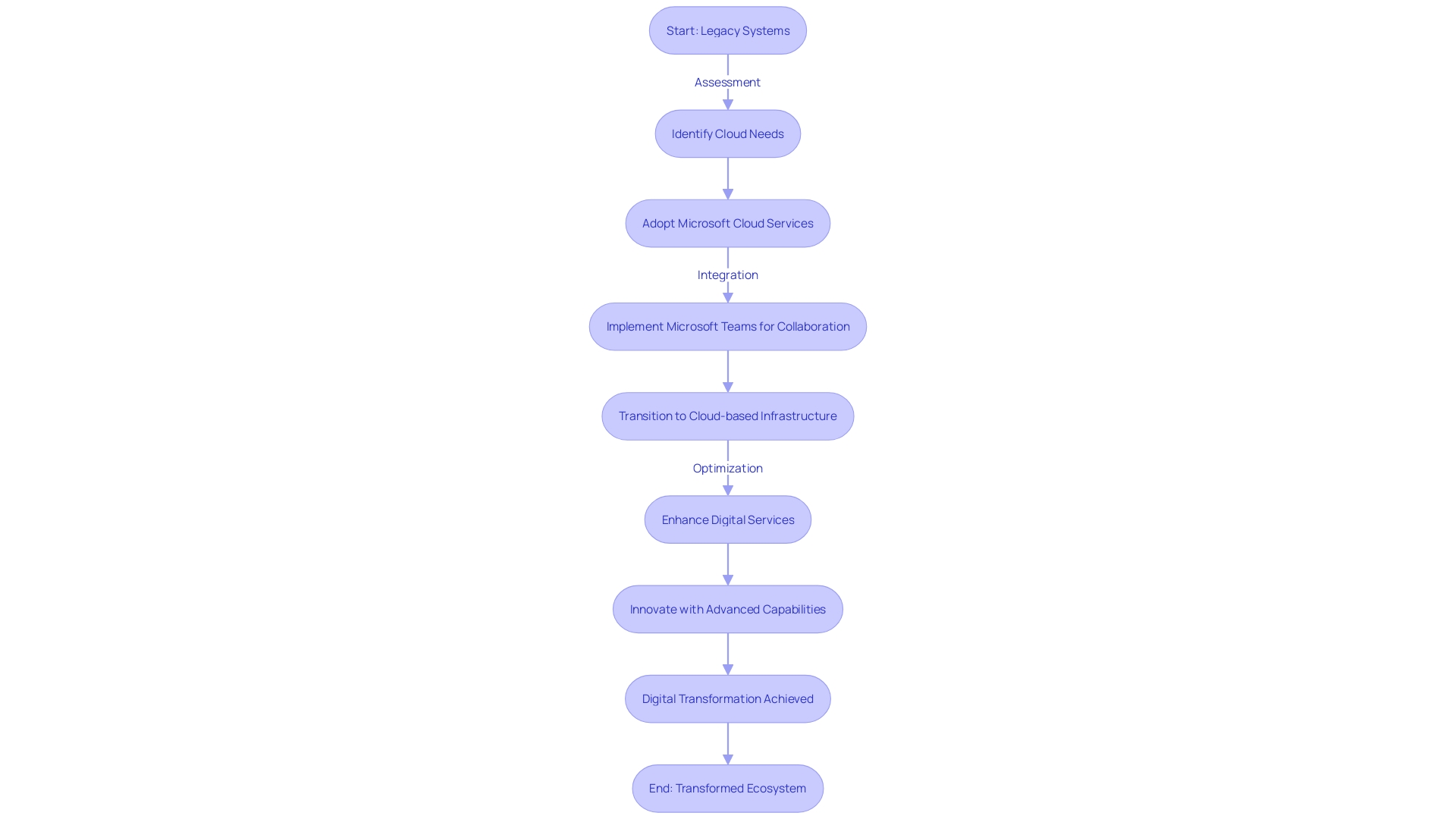
Key Components of Microsoft's Modern Workplace
The Modern Workplace by a well-known technology company is a transformative ecosystem created to enhance productivity and collaboration across various platforms. At its core, the Microsoft 365 suite seamlessly integrates Office 365, Windows 10, and Enterprise Mobility + Security (EMS), providing a robust suite of tools that cater to diverse organizational needs for communication, collaboration, and data management.
Teams is a hub for teamwork, uniting chat, video meetings, file storage, and application integration in one platform, enabling seamless collaboration regardless of location or device. Meanwhile, SharePoint Online offers a dynamic web-based platform for content creation, sharing, and management, allowing for the establishment of intranet sites, document libraries, and team sites that streamline information dissemination and cooperative efforts.
An essential component of this ecosystem is Azure Active Directory, a cloud-based identity and access management service that ensures secure user authentication and authorization across services and applications. Furthermore, the Power Platform empowers organizations to innovate with low-code/no-code tools. Comprising Power Apps, Power Automate, and Power BI, it enables custom application development, process automation, and data analysis with minimal coding expertise.
Illustrating the impact of these components, Amgen, a biotechnology pioneer, adopted Copilot for 365, starting with 300 licenses and expanding to 20,000, to accelerate rare disease research by enhancing collaboration and data management. Similarly, the Ford Foundation leveraged WordPress' block editor to transform its digital content strategy, aligning with its mission to combat global inequality.
In the context of digital transformation, the offerings from this technology company are pivotal in driving the era of intelligent cloud and intelligent edge. Acknowledging the dual generational shifts in work dynamics, the New Future of Work Report series by a technology giant highlights the evolution of remote and hybrid work technologies, as well as the integration of generative AI into daily work practices.
The combination of Microsoft's advanced components for the Modern Office with innovative AI capabilities like Microsoft Copilot for Microsoft 365 demonstrates a forward-thinking approach to empowering every individual and organization to achieve more. These advancements reflect the commitment to fostering an environment where people can connect, focus, and thrive, backed by a robust and secure cloud infrastructure.
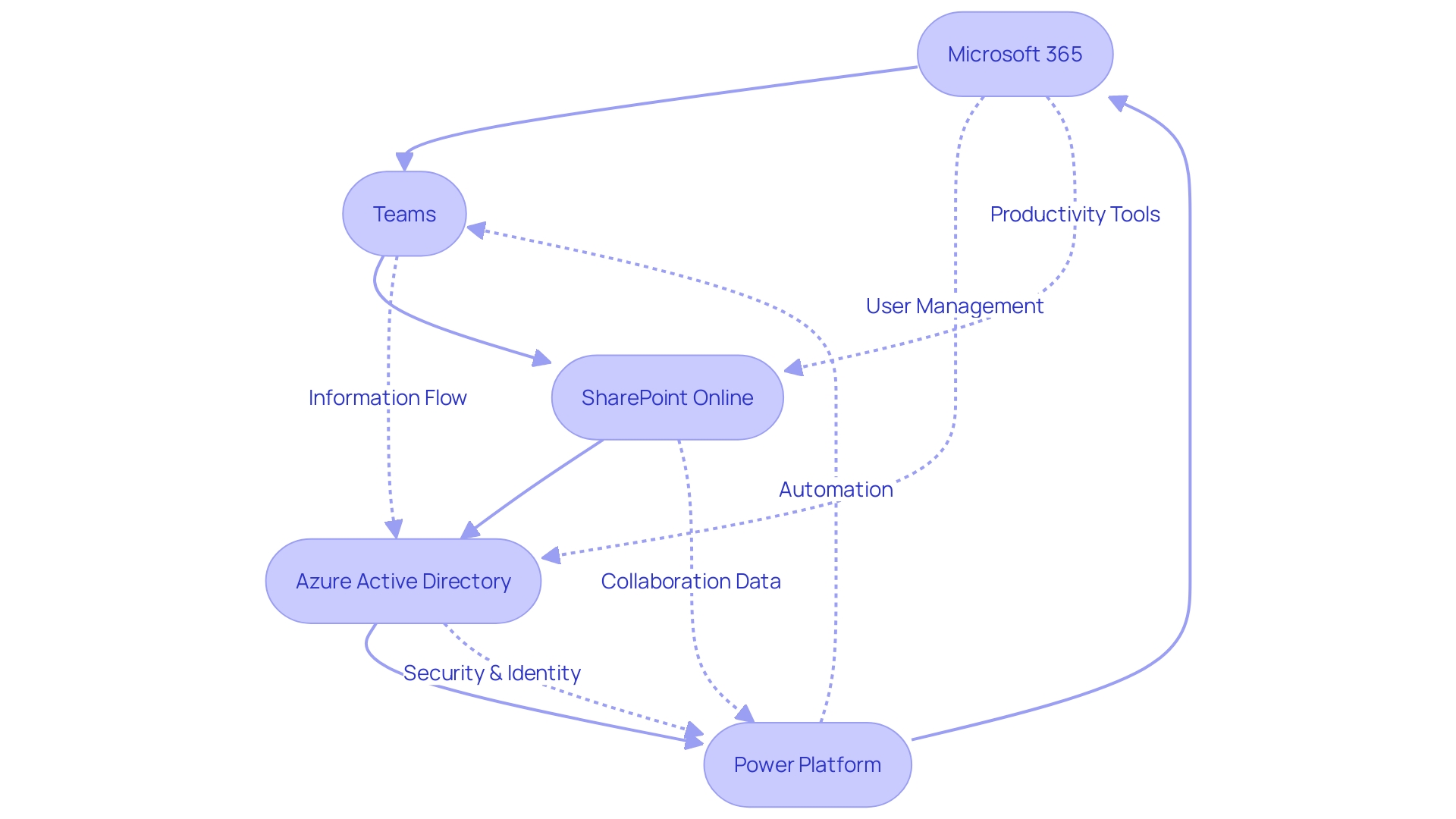
Benefits of Microsoft's Modern Workplace
The implementation of the contemporary environment by a well-known technology company is a revolutionary move for organizations aspiring to succeed in the digital age. It offers a comprehensive suite of tools that enhance productivity, communication, and collaboration while prioritizing security and scalability.
Enhanced Productivity: With the Modern Workplace, employees are equipped with a plethora of productivity tools. Real-time co-authoring, instant messaging, and video conferencing are just a few of the features that enable teams to work more efficiently and collaborate seamlessly, leading to quicker task completion.
-
Improved Communication: Central to this ecosystem is Microsoft Teams, which serves as a hub for all communication needs. It allows teams to connect from anywhere, on any device, and reduces reliance on lengthy email chains by facilitating real-time chat, voice, and video communication.
-
Streamlined Collaboration: SharePoint Online acts as a centralized platform for document management and content sharing. It streamlines collaboration by ensuring appropriate information access, which is fundamental in fostering a culture of knowledge sharing and collaboration.
-
Improved Security: Security is a foundation of the up-to-date working environment, with strong measures such as multi-factor authentication, data encryption, and advanced threat protection. These features collaborate to reduce security risks and safeguard organizational assets.
-
Scalability and Flexibility: The Modern Workplace is designed to grow with an organization's needs, accommodating businesses of all sizes. Its cloud-based nature offers the flexibility required for modern environments, ensuring compatibility across various devices and access points.
Organizations leveraging these benefits report significant improvements in operational efficiency, innovation, and sustainable growth. In the aftermath of recent shifts towards remote and hybrid models, highlighted by the New Future of Work Reports, these tools have become increasingly pertinent. They facilitate a reimagined approach to work, harnessing the power of generative AI and other advanced technologies to redefine productivity and collaboration in the workplace.
Moreover, in this rapidly evolving digital landscape, the goal of empowering every organization echoes the necessity for robust digital transformation strategies. As competition intensifies and the focus shifts towards cloud-based services, organizations must navigate these changes strategically to maintain a competitive edge and achieve their overarching goals.
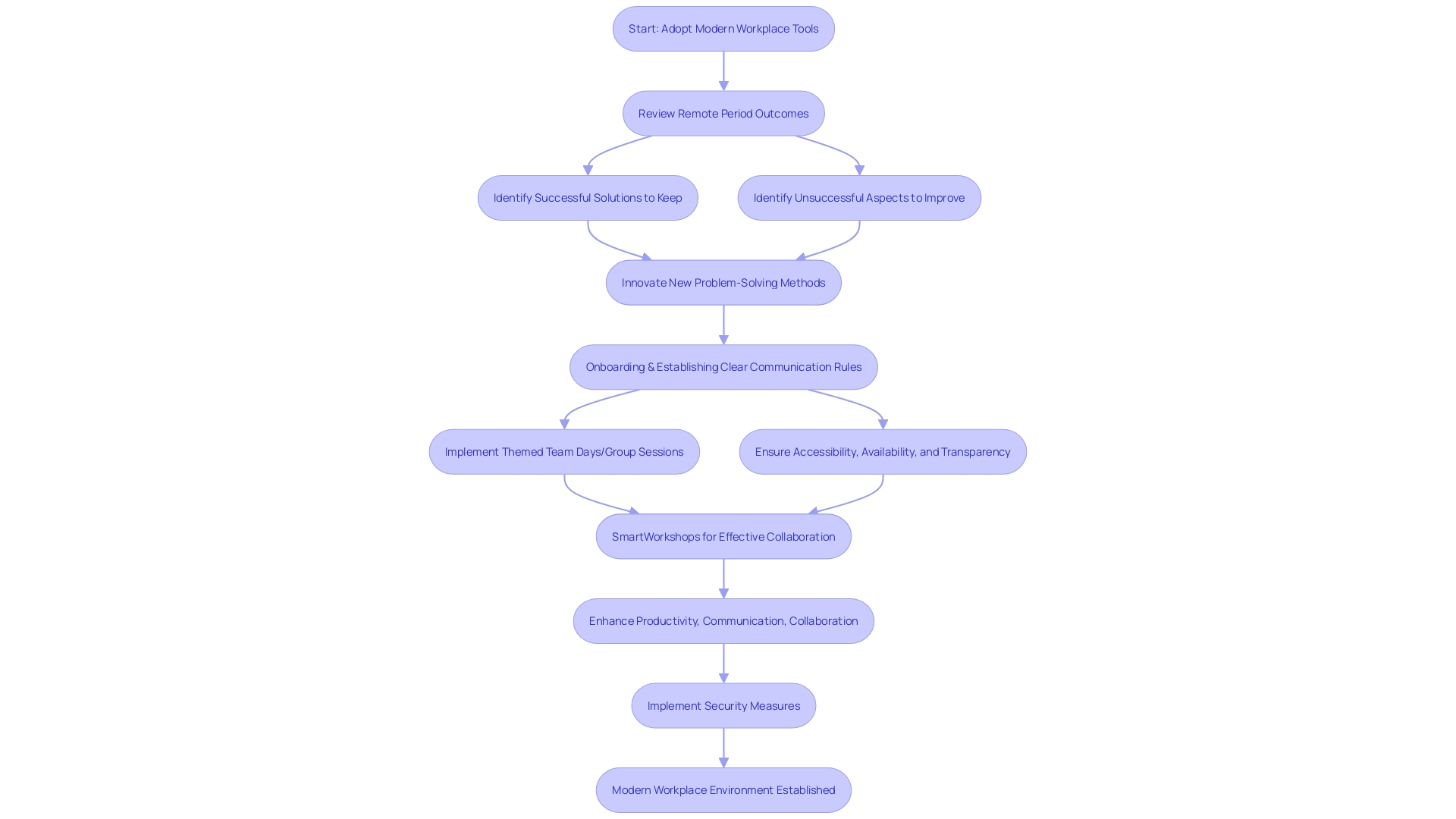
Digital Transformation and Business Continuity
At the forefront of facilitating digital transformation, the solution from Microsoft enables businesses to comprehensively integrate digital technology into their operations. It is more than just a suite of tools; it's a transformative approach that fundamentally alters how companies function and deliver value to their customers. By adopting cloud-based solutions and advanced collaboration tools, organizations can realize a multitude of benefits, from automating key processes to optimizing overall operations, and maintain agility in the face of rapidly evolving market conditions.
One of the unmatched advantages of the Modern Workplace by the software giant is its capacity to ensure business continuity. Organizations can provide secure, remote access to data and applications, a critical feature that supports business operations during disruptions or crises. This ability has become especially significant in the context of the global shift to remote and hybrid employment models, as emphasized by the recent progress in remote employment technologies and the incorporation of generative AI into everyday job practices.
"According to the New Future of Work Report series, there have been not one but two generational shifts in how work gets done in the past three years, both of which were only possible because of decades of research and development.".
The Modern Workplace's comprehensive suite of tools empowers employees to collaborate seamlessly and maintain productivity, irrespective of geographical constraints. Such technological empowerment is crucial for institutions like TBC Bank, which aims to deliver exceptional banking experiences to both customers and employees, and for healthcare organizations like the Guthrie Clinic that seek to enhance community health through innovative outreach programs and services.
- As Tajinder Pal Singh Ahluwalia, Product Marketing Lead at Azure, points out, state-owned energy company Energinet harnessed the power of cloud-based solutions for greater agility in managing a rapidly evolving power grid, aligning with Denmark's sustainability goals.
The dedication to digital transformation is evident, with the company's goal of empowering every individual and every organization on the planet to accomplish more. However, this journey is not without its challenges, as the competitive landscape and the shift to cloud services introduce both execution risks and opportunities for innovation.
In the end, the Contemporary Environment is more than a collection of technologies; it is a strategic facilitator that enables businesses to adjust and flourish in a digital-first world, paving the path for a future where operational resilience and continuous enhancement are not just objectives, but actualities.
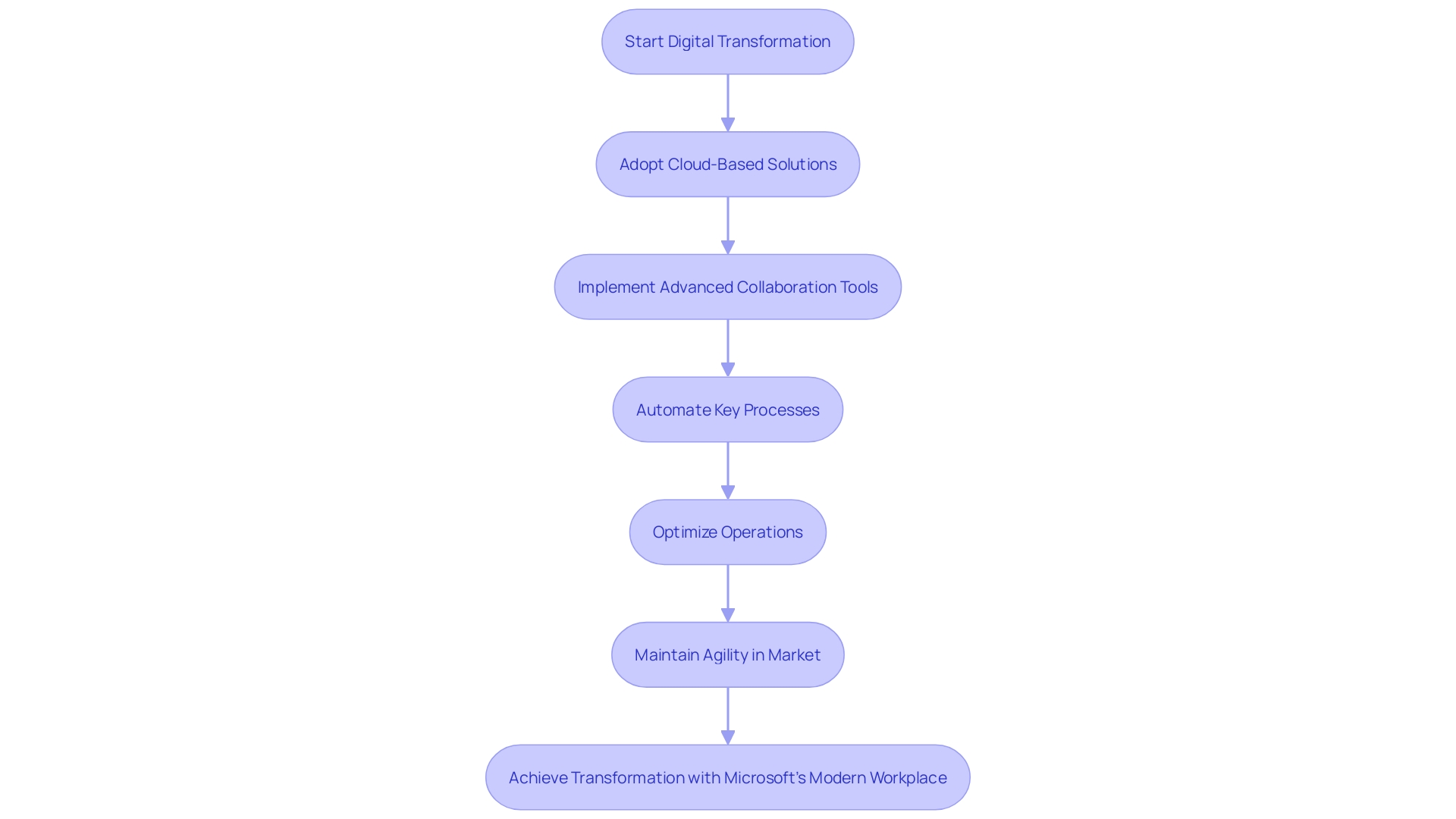
Implementing and Managing Microsoft's Modern Workplace
The execution and administration of Microsoft's Contemporary Environment is a crucial step towards propelling digital transformation and attaining enhanced effectiveness, productivity, and expansion. The procedure starts with determining specific goals, establishing what objectives the organization aims to achieve with the integrated solutions. An assessment of the current technological landscape is critical, understanding the existing infrastructure and readiness for adopting new technologies.
Following this evaluation, a structured plan must be crafted, detailing the steps, timelines, and resources that will facilitate a seamless transition. A pilot phase is essential to test these solutions in a controlled environment, which provides an opportunity to gather feedback and make necessary adjustments before a full-scale deployment.
Once the pilot phase confirms the strategy's effectiveness, the next phase is the rollout and training of the workforce to ensure they are well-equipped to utilize the new tools and workflows. This training is essential for the successful adoption of the Modern Workplace.
Post-implementation, continuous monitoring and optimization are imperative to maximize the benefits of the digital workplace. This phase involves identifying areas of improvement and adjusting strategies to enhance performance and productivity.
Energinet's migration to a cloud-based solution underlines the necessity of agility and efficiency in modern technology infrastructures. Their transition to Azure demonstrates the importance of cloud services in supporting long-term goals and operational efficiency. Similarly, the forward-looking statements and commitment to empowering organizations underscore the transformative potential of cloud services and AI, despite the competitive and execution risks inherent in any technological investment.
In an era where the future of employment is being reshaped by AI and where research plays a critical role, organizations must navigate their unique requirements with strategic planning and execution. The Modern Work Superheroes community and Microsoft's resources provide a platform for collaboration and support, helping organizations transition smoothly into the future of work.
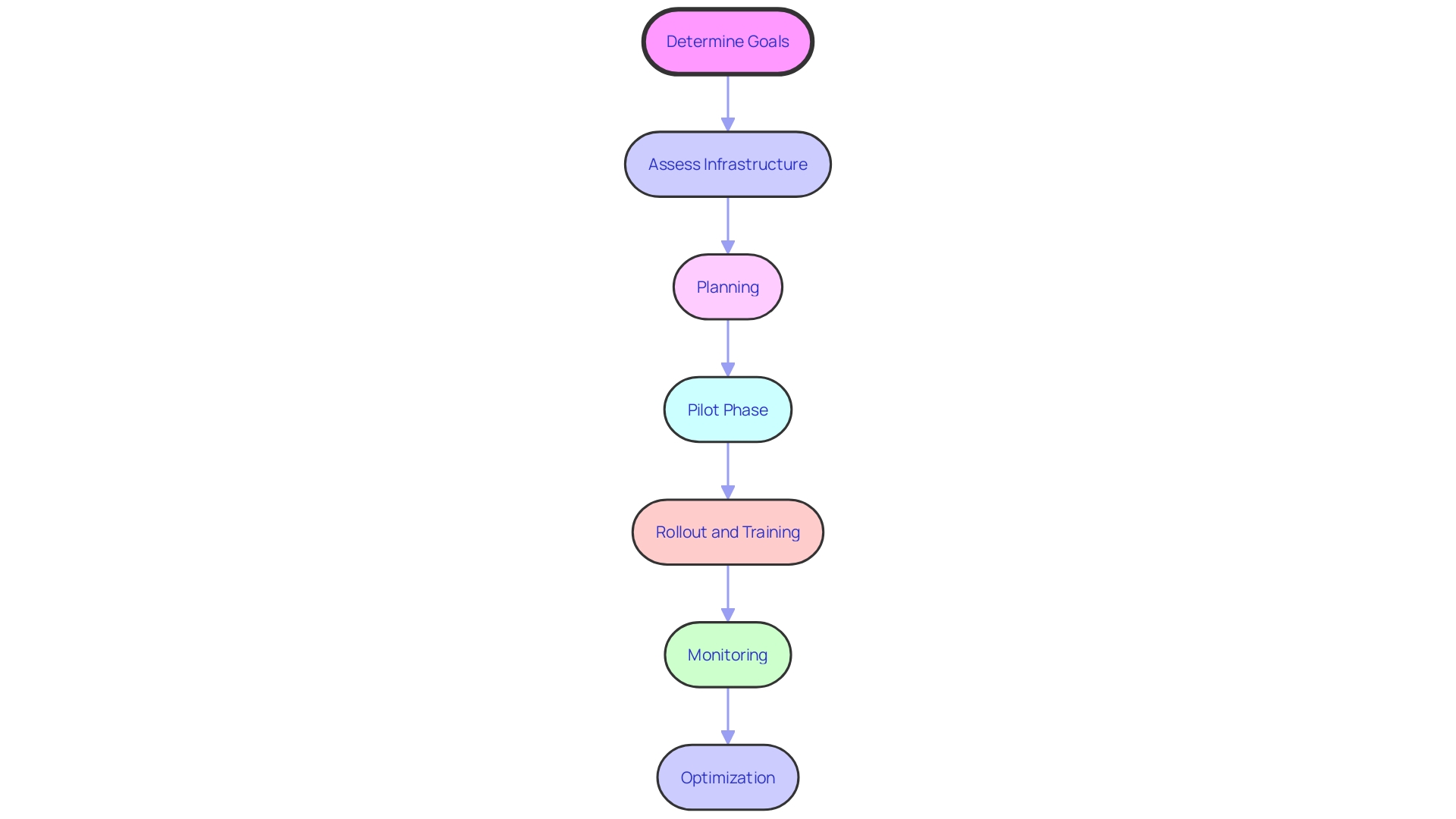
Conclusion
In conclusion, Microsoft's Modern Workplace is a transformative ecosystem that empowers organizations to reshape their operations and drive digital transformation. With cloud computing at its core, it offers a dynamic foundation for businesses to pursue their objectives efficiently and effectively.
Key components like Microsoft 365, Microsoft Teams, and SharePoint Online provide robust tools for communication, collaboration, and content management. Adopting Microsoft's Modern Workplace brings numerous benefits, including enhanced productivity, improved communication, streamlined collaboration, and prioritized security and scalability.
This ecosystem plays a crucial role in digital transformation and business continuity. By leveraging cloud-based solutions and advanced collaboration tools, organizations can automate processes, optimize operations, and maintain agility in the face of market disruptions. Employees can collaborate seamlessly regardless of their location, ensuring business continuity.
Implementing and managing Microsoft's Modern Workplace requires clear objectives, a thorough assessment of the current technological landscape, and a structured plan. Training and continuous monitoring are essential for successful adoption and optimization. Microsoft's resources and the Modern Work Superheroes community provide collaboration and support for organizations transitioning into the future of work.
In summary, Microsoft's Modern Workplace enables businesses to navigate the complexities of the digital landscape and emerge more connected, efficient, and resilient. By harnessing the power of cloud computing, AI, and collaborative tools, organizations can drive their digital transformation journey and achieve their overarching goals. It is a strategic enabler that empowers organizations to adapt and thrive in a digital-first world, ensuring operational resilience and continuous improvement.




